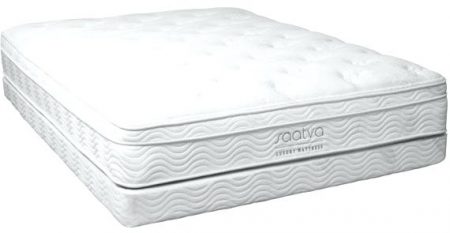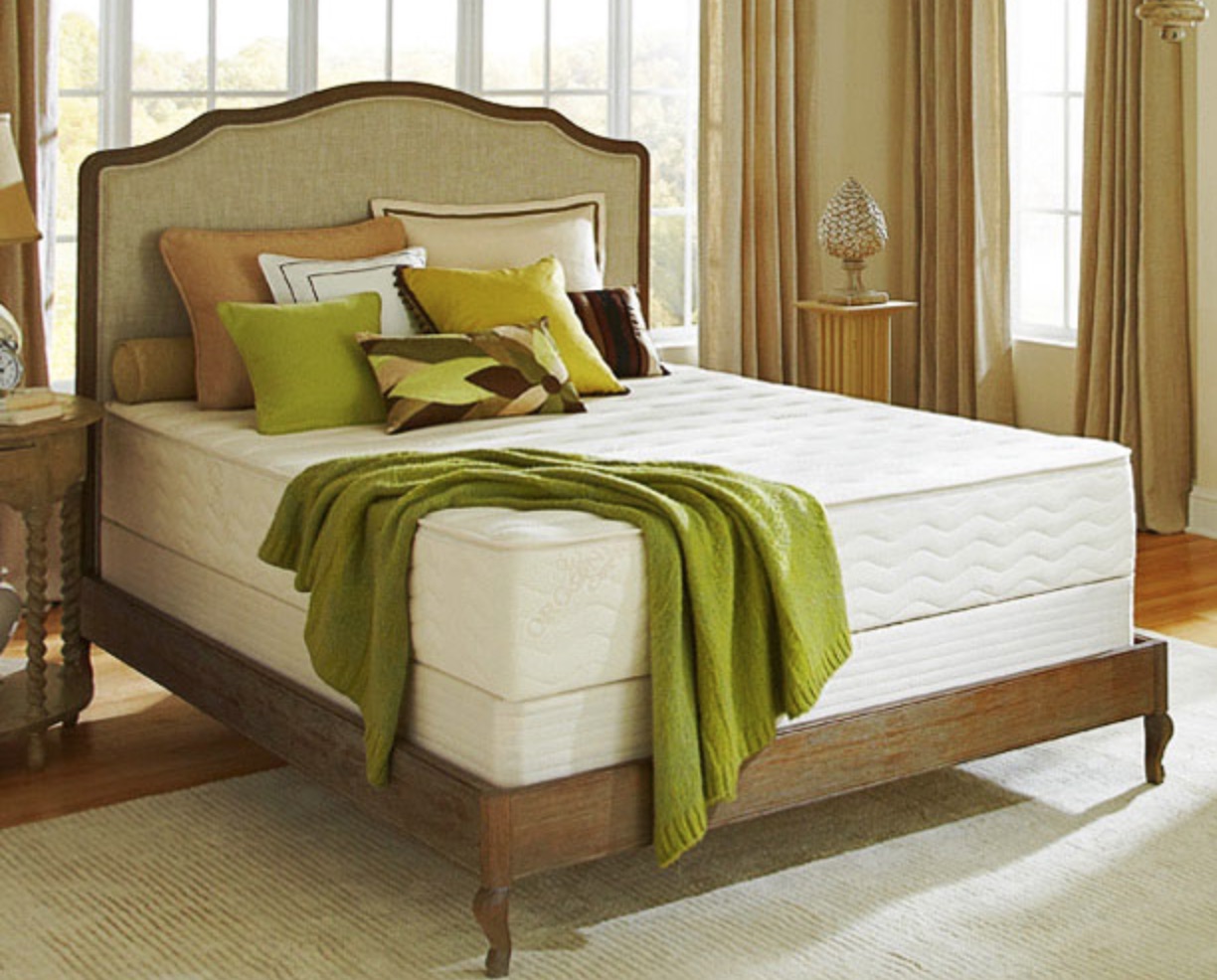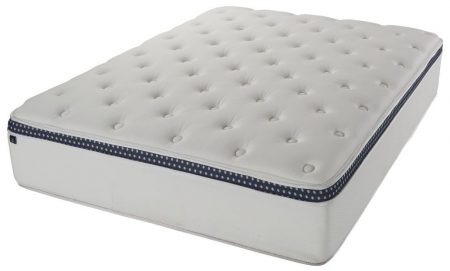What Is the Softest Type of Mattress?
In the above section, we discussed how different levels of conforming can affect the feel and overall plushness of a mattress. While mattresses come in a range of plushness levels, some types of mattresses offer better levels of conforming, and therefore “feel” softer,” than others.
Below we review the five common mattress types you’ll encounter today. To help you find your ideal mattress type, we also evaluate the suitability of each type for those interested in a plush mattress.
Best Plush Foam Mattresses
Mattress Reviews
Nectar Mattress Review
Mattress Reviews
GhostBed Luxe Mattress Review
Foam mattresses use foam in all aspects of their construction, with higher-density foam in the support layer and polyfoam and/or memory foam in the comfort layers. Foam mattresses are widely regarded as one of the plushest mattress types, thanks to their superior pressure relief. Foam beds offer the highest level of conforming, although they’re available in all levels of the firmness spectrum, from ‘Soft’ to ‘Firm.’
Foam mattresses with a higher firmness rating tend to use higher amounts of higher-density and medium-density foams, in order to provide more durability and support for heavier individuals.
Softer mattresses with lower firmness ratings tend to use more lower-density foams. These provide the plushest mattress surface and can be more comfortable for lighter individuals and side sleepers. However, they can also trap body heat, as your body sinks deeper into the mattress surface.
As a result, it’s best to look for mattresses that use a mix of medium- and low-density foams in the comfort layers. These can help you achieve that plush feel, without sacrificing durability or temperature neutrality.
Best Plush Hybrid Mattresses
Mattress Reviews
WinkBeds Mattress Reviews
Hybrid mattresses use pocketed coils in their support core, above a base layer of polyfoam, with comfort layers of memory foam, latex, polyfoam, and/or minicoils. Because hybrid mattresses use individually encased pocket coils in their support core, these beds can offer a higher level of contouring than a traditional innerspring bed, which relies on a uniform coil grid for support.
However, the softness of a hybrid mattress will ultimately depend on the thickness of the comfort layers, along with what types of materials are used. Hybrid mattresses with memory foam comfort layers, for example, will likely feel softer than a hybrid using latex or polyfoam.
We see this distinction play out with two of the plush mattresses we reviewed above. Our Best Value Soft Mattress, the Spartan by Brooklyn Bedding, has a softer rating (3.5), and includes gel memory foam in its comfort layer. Our Best Soft Hybrid Mattress, The WinkBed, has a higher rating (4.5), and uses polyfoam and microcoils in its comfort layers.
Best Plush Latex Mattresses
Mattress Reviews
PlushBeds Botanical Bliss Mattress Review
Latex mattresses can be made entirely from natural latex, synthetic latex, or a mix of the two.
The softness of a latex mattress will depend on the density of the latex foams, and the process used to create the latex. Dunlop latex has a denser feel, so you’re more likely to find it in the support layer of a mattress, or in mattresses with higher firmness ratings. Talalay latex, on the other hand, has a much softer, fluffier feel. Talalay latex is commonly used in the comfort layers of latex mattresses, and in mattresses with softer firmness ratings.
Regardless of their construction, however, latex mattresses do not provide an equivalent level of conforming to a memory foam mattress. These beds provide a mix of contouring and support, but without too much sinking. As a result, they tend to sleep much cooler than all-foam beds (aided by the natural breathability of latex, if organic latex is used), and they provide a more responsive surface for sex.
Best Plush Innerspring Mattresses
Mattress Reviews
Saatva Mattress Review
Innerspring mattresses use a uniform grid of steel innerspring coils in their support core, with foam or memory foam in their comfort layers. Because the support layer has a uniformity to it, these mattresses are not necessarily known for their plushness.
However, they can achieve a softer feel if they have thicker comfort layers and use softer foams. The Saatva, our Best Value Soft Mattress, is one such example. This mattress offers a ‘Medium Soft’ (4) model, which features 3.5 inches of polyfoam and memory foam, above another comfort layer of 4-inch pocket coils for additional contour.
Softer innerspring mattresses can be a good choice for people who benefit from the evenly distributed support offered by an innerspring base, but want to enjoy a bit more plushness when they lie down on the mattress surface.
Airbeds use air as their support system, with individual chambers of air that can be adjusted by the sleeper manually using a hand crank or by remote control.
While the idea of adjusting the firmness to your specific preference appeals to many sleepers, it should be noted that these beds generally have thin comfort layers, or none at all. As a result, airbeds are generally not regarded as plush mattresses, nor are they preferred by sleepers seeking an ultra plush mattress.
Other Considerations for Sleepers Interested in a Soft Mattress
Soft mattresses have unique advantages and disadvantages to offer sleepers. Below, we discuss some of the different construction and performance factors shared by plush mattresses. Take a look and consider whether these qualities might improve or impair your sleep experience.



